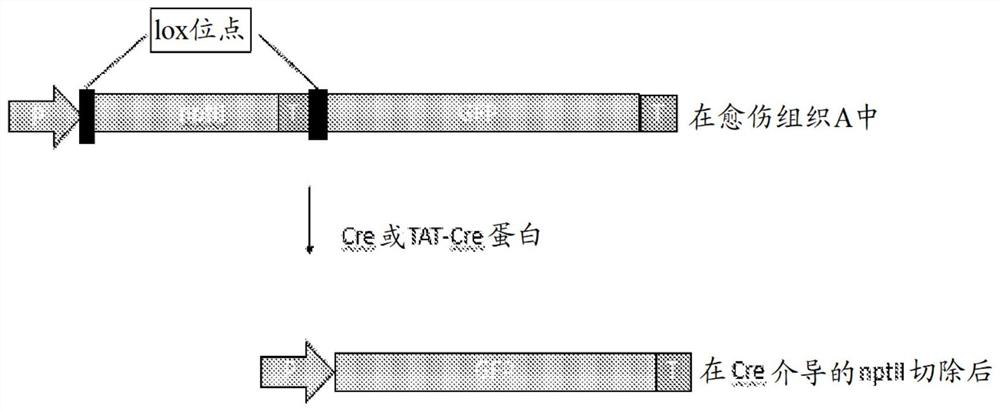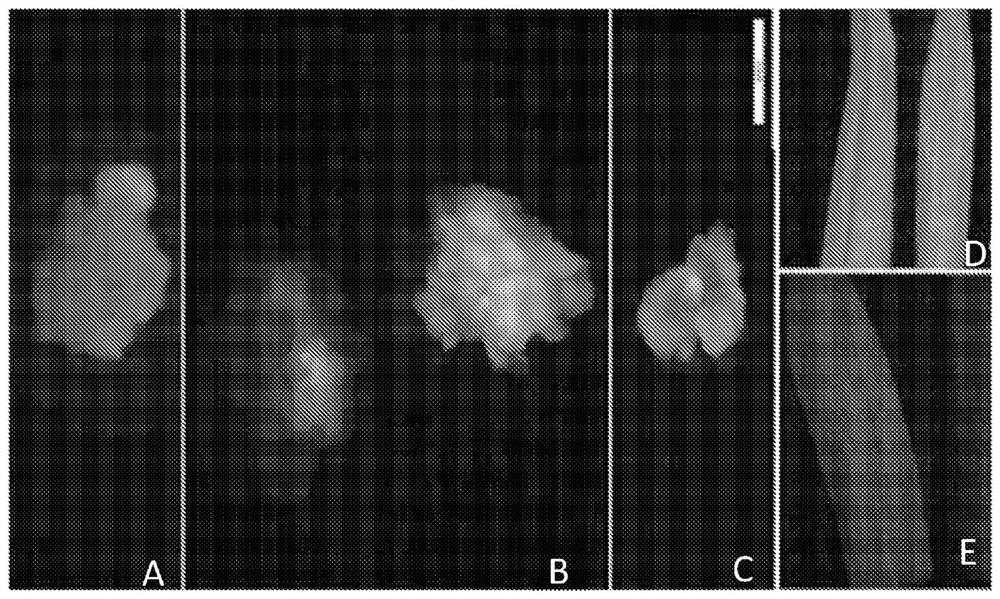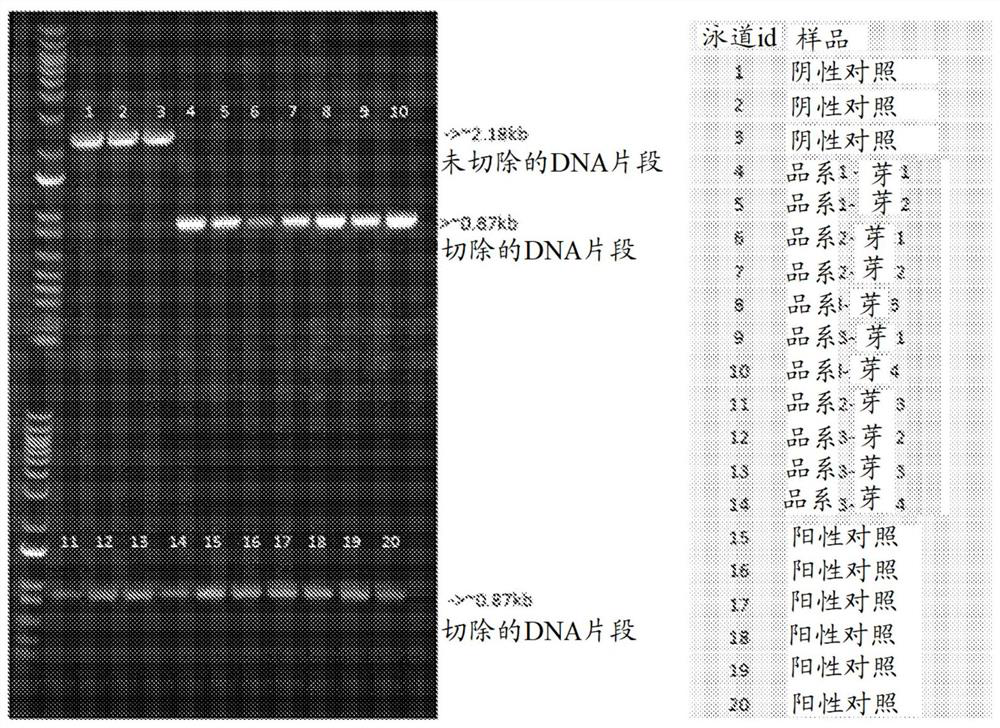Compositions and methods for transferring biomolecules to wounded cells
A technology of biomolecules and plant cells, applied in the direction of biochemical equipment and methods, botanical equipment and methods, and other methods for inserting foreign genetic materials
- Summary
- Abstract
- Description
- Claims
- Application Information
AI Technical Summary
Problems solved by technology
Method used
Image
Examples
Embodiment 1
[0077] Example 1: Delivery of TAT-Cre protein into wounded maize callus cells.
[0078] Transgenic maize line A was generated with a recombinant DNA construct in the nuclear genome that included the enhanced CaMV 35S promoter in the 5' to 3' direction and the HSP70 intron in the 5' untranslated region , an nptII selectable marker gene cassette flanked by two lox sites, and then the green fluorescent protein (GFP) encoding gene (see, e.g., Zhang et al., Theor.Appl.Gen.107(7):1157-1168; 2003). In this arrangement, GFP cannot be functionally expressed due to the insertion of the nptII gene between the 35S promoter and the GFP coding sequence. However, in the presence of Cre recombinase, the nptII gene is excised due to the flanking lox sites, which results in the high level of GFP expression that can be observed in most tissues by placing the 35S promoter and GFP coding sequence together ( figure 1 ). Thus, the GFP construct inserted into the genome of maize line A can serve ...
Embodiment 2
[0086] Example 2: Delivery of Cre protein into wounded maize callus cells.
[0087] Embryogenic callus cells were generated from immature embryos of transgenic maize line A as described in Example 1 above. 3-4 grams of callus were blended at high speed for 9-10 seconds in a medium containing 50% concentration of medium 4278 (Table 3) and 0.3M mannitol to obtain callus pieces with a size of 1-2mm fine suspension. After blending, the callus suspension was poured into a sieve, washed with the medium used for blending, and then pipetted onto filter paper.
[0088] Table 3. Composition of Medium 4278
[0089] Element ingredient description quantity MP00927 FN · Iite bulk storage solution (10X) 100.000mL MS_MICRON UTRIENT MS Micronutrients 100.000mL GAMBORGS_B5_500X Gamborgs B5 500X 2.000mL SUCROSE sucrose 30.000g ASPARAGINE_MONOHYD Asparagine monohydrate 1.000g TC_WATER_TO_VOLUME Dilute to the volume with TC water ...
Embodiment 3
[0098] Example 3: Delivery of RNP into wounded maize callus cells.
[0099] The ability to deliver Cre recombinase to injured callus cells suggests that other proteins, ribonucleoproteins and nucleases, can also be added to cells by this method. Embryogenic callus cells were generated from maize immature embryos as described in Example 1 above, and wounded callus suspensions were generated as described in Example 2 above. The blended callus suspension was washed and dried as described above. When the RNP complex solution described below is mixed with injured callus cells, the PEG solution can be added as described above.
[0100] To generate guide RNA-Cas9 ribonucleoprotein (RNP) complex, 20.6 μg Cas9 protein and 8.6 μg RNA were mixed in 1×NEB buffer 3 (100 mM NaCl, 50 mM Tris-HCl, 10 mM MgCl 2 , 1 mM DTT, pH 7.9, at 25°C) to obtain a 1:2 molar ratio of Cas9 to gRNA, add 1 µl RNase inhibitor (RiboLock; ThermoFisher Scientific) to a total volume of 30 µl, and incubate at room...
PUM
 Login to View More
Login to View More Abstract
Description
Claims
Application Information
 Login to View More
Login to View More - R&D
- Intellectual Property
- Life Sciences
- Materials
- Tech Scout
- Unparalleled Data Quality
- Higher Quality Content
- 60% Fewer Hallucinations
Browse by: Latest US Patents, China's latest patents, Technical Efficacy Thesaurus, Application Domain, Technology Topic, Popular Technical Reports.
© 2025 PatSnap. All rights reserved.Legal|Privacy policy|Modern Slavery Act Transparency Statement|Sitemap|About US| Contact US: help@patsnap.com



